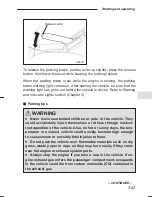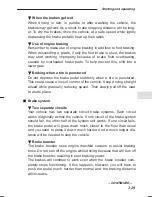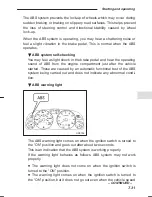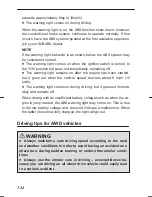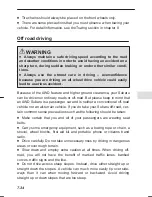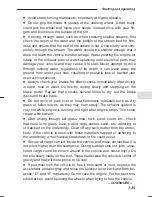
FORESTER NA. (E)
7
Starting and operating
7-39
– CONTINUED –
formance on snowy and icy roads. Refer to ABS (Anti-Lock Brake Sys-
tem) in this chapter for information on braking on slippery surfaces in
ABS equipped vehicle.
B
Wiper operation when snowing
Before driving in cold weather, make sure the wiper blades are not
frozen to the windshield or rear window. If the wiper blades are frozen
to the windshield or rear window, use the defroster with the airflow
control dial in the “
” position and the temperature control lever
turned fully to the right until the wiper blades are completely thawed
out. To thaw out the rear wiper blade, use the rear window defogger.
When driving in snow, if frozen snow starts to stick on the surface of
the windshield despite wiper operation, use the defroster with the air-
flow control dial in “
” and the temperature control dial turned fully
to the right. After the windshield gets warmed enough to melt the fro-
zen snow on it, wash it away using the windshield washer.
Snow stuck on the wiper arm prevents the wiper from working effec-
tively. If snow is stuck on the wiper arm, pull off the road to a safe
place, then remove it. If you stop the car at road side, use the hazard
warning flasher to alert other drivers.
We recommend use of non-freezing type wiper blades during the sea-
sons you could have snow falling and sub-zero temperature.
J
Snow tires
WARNING
D
When replacing a tire, make sure you use only the same size,
construction, brand, and load range as the original tires listed on
the tire placard. Using other sizes or construction may result in
severe mechanical damage to the drive train of your vehicle and
may affect ride, handling, braking, speedometer/odometer cal-
ibration, and clearance between the body and tires. It also may be
dangerous and lead to loss of vehicle control.
D
Do not use a combination of radial, belted bias or bias tires
since it may cause dangerous handling characteristics and lead
to an accident.



